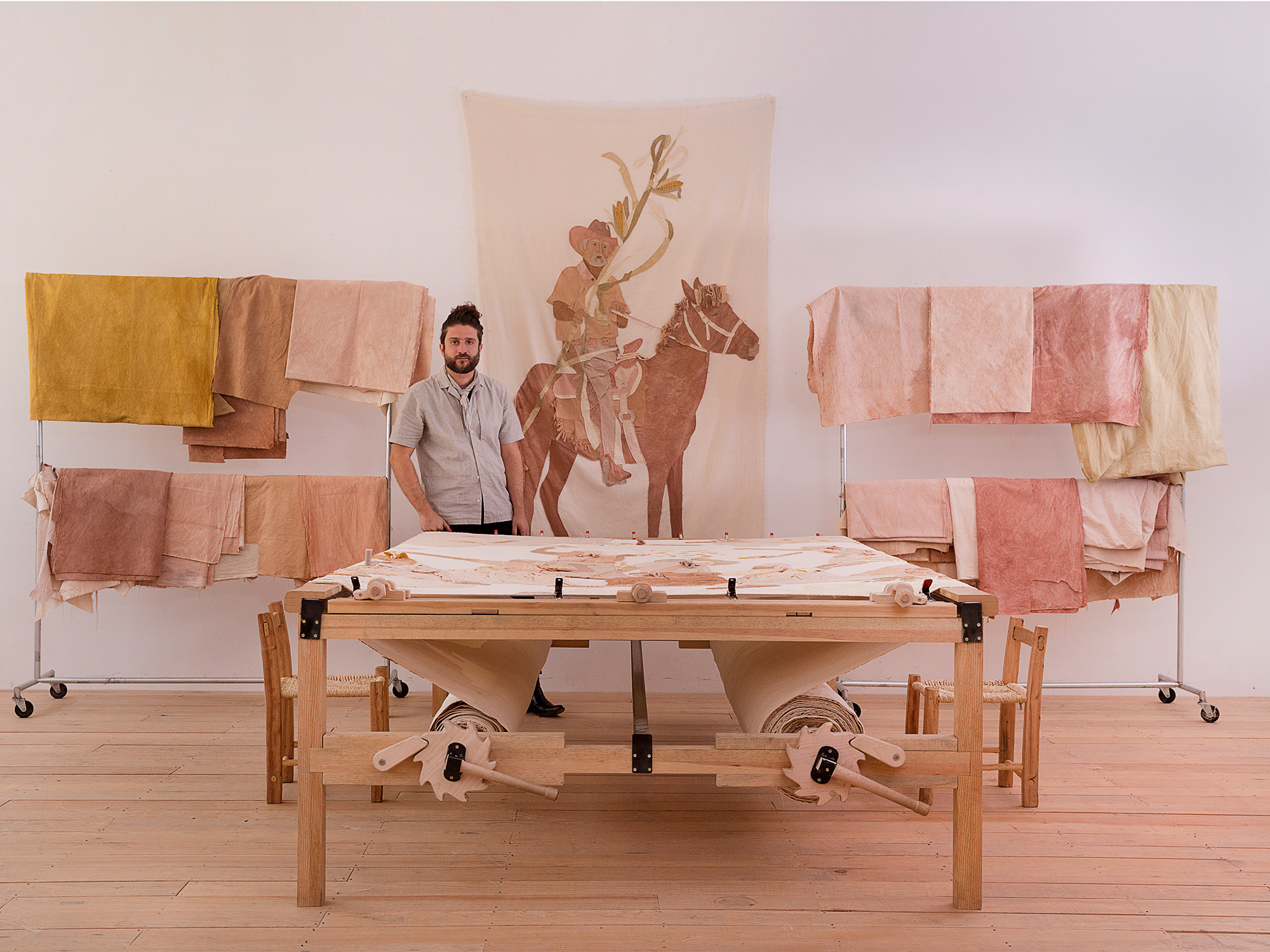By Glenn Adamson
Doña Lucy sits among the corn. A hundred-odd ears of it, red and purple and yellow and gold, all the colors of the plant that nature allows, but most of us seldom see. The corn spills bountifully around Doña Lucy; it lies on the ground, is piled up in a basket at her right elbow, and at her other side, stands in a bound bundle, still in its husks. A single stalk rises behind her like a planted flag, staking a claim on the land – her people’s land, worked for generations beyond counting.
This is one of three monumental portraits that grace Fernando Laposse’s new exhibition at Friedman Benda, Ghosts of Our Towns. The title might encourage us to read the image of Doña Lucy, and her fellow villagers Don Emiliano and Saul, as if they were visitors from another time, spirits of the past. But look again: these people are palpably present, and possessed of an arresting immediacy. As with everything else Fernando Laposse makes – the cabinets and seating with their abundant pelts of agave fiber, the Totomoxtle tables with their luminous maize marquetry – the portraits incarnate a contemporaneity that has a more than ordinary staying power.
Partly, this has to do with the sheer character of these individuals, which he has managed to capture beautifully. All three live in Tonahuixtla, the rural community where Laposse has been working for years, developing his celebrated Totomoxtle project; they are among his many partners in this enterprise, which is equal parts ethics, aesthetics, and ecology. Doña Lucy, he explains, is an indigenous botanist, “the one that hand picks all the seeds we will plant every season,” and also the first woman ever to lead the village’s council of elders. Don Emiliano is a local builder, who helped to reconstruct the workshop where Totomoxtle is made. Saul’s story is one of departure and return: Laposse remembers playing with him as a child, when he would visit Tonahuixtla with his family. Saul left for the USA when he was seventeen, becoming an agricultural worker in California – one of many economic migrants to leave in the wake of the passage of NAFTA, which devastated rural Mexico’s economy. After twelve years away, he returned to be with his family, and now balances farming with his role as a manager in the town workshop. “In my opinion,” Laposse says, “Saul represents one of the best success stories of the project, which is to create a situation where returning migrants can see a future in Tonahuixtla.”
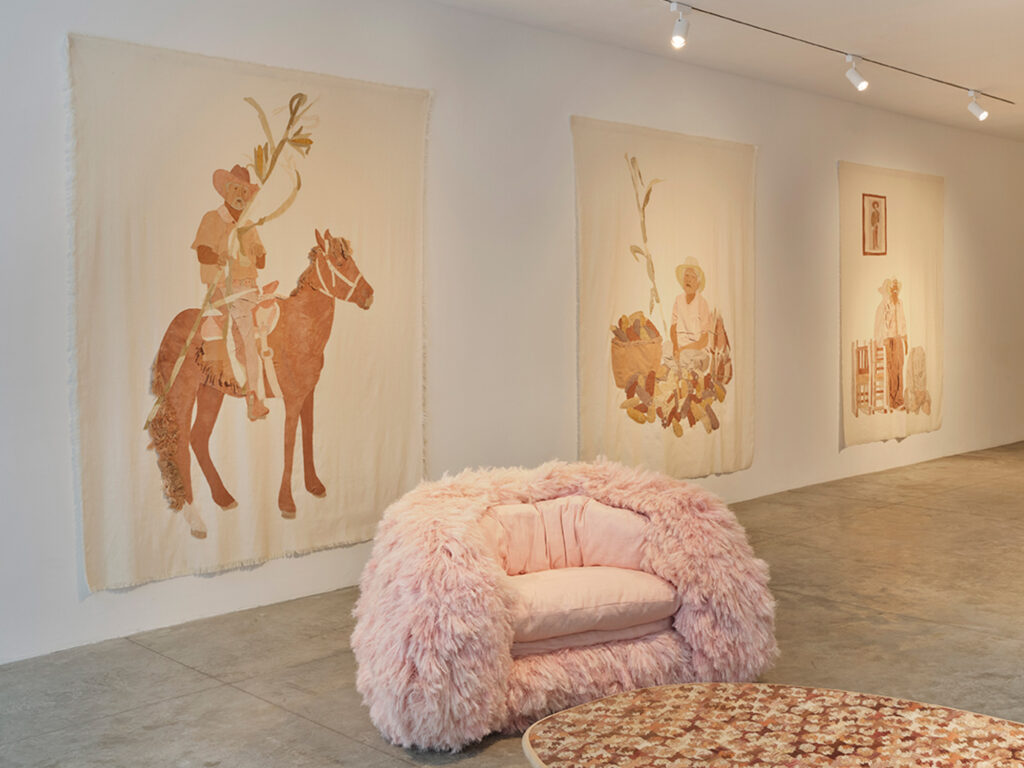
These personal narratives cannot fully be conveyed in an image, but Laposse’s portraits do conjure the world in which they have unfolded. It is a world that he has helped to shape. To an extent highly unusual in contemporary design – a field in which well-meant but superficially symbolic gestures are, unfortunately, commonplace – he has conceived his work as a means of developing the prosperity of rural communities. This takes time. Laposse often talks about the temporal disparity of the present moment. On the one hand, there is the breathless pace of the international marketplace, with its lead times of months, weeks, or – in this era of just-in-time manufacturing and on-demand delivery – even days or hours. On the other, there are the deeper rhythms those of agriculture, which furnishes humanity with its actual sustenance, and matures only over years, or decades. This expansive conception of growth over time has characterized all of Laposse’s projects, which unfold over many stages: learning about the situations facing the communities where he works, and gaining their trust; understanding the biological and economic value chain, its weak links and how they might be strengthened; the actual design phase, taking into account this complex intersection of factors; and finally, the exploration of materiality – the what, how, where and who of making. This last aspect of his practice has deepened over time, taking equal priority alongside his critical intentions.
Thus, while the Conflict Avocados project is Laposse’s newest body of work, it has already been in development for years, with significant support from the National Gallery of Victoria – only the latest instance of the institution’s extraordinary support of the contemporary design avant garde. His interest in the resource has many dimensions – ranging across biology, history, and material culture – but at its core it is political, a means of raising the visibility of an ongoing conflict over land use in Mexico, which has remained firmly off the radar of consumers who unwittingly contribute to it. This is a complicated story (well told by Laposse in a recent talk for The World Around, available online), but in brief, what you need to know is that despite the avocado’s reputation as a healthy option, whether in your salad or in your beauty products, the actual industry that produces the fruit is a destructive monoculture. It is typical of how we grow food in the industrial era, efficiently feeding an ever-growing global population, but wrecking communities in the process, and imposing unsustainable homogeneity across the land.
Over 95% of the avocados sold today are derived from a single tree, grown in 1932 by a Californian horticulturist called Rudolph Hass. Many of these identical avocados are grown in Michoacan, historically a biodiverse region of Mexico, now dominated by this one profitable cash crop. This extractive propagation has led to rampant deforestation, including in one of the key habitats for migratory monarch butterflies, whose populations have been steadily decreasing as a result, and also in human habitations, where a centuries-old sustainable farming ecosystem has been wiped out. Protestors against the avocado cartels have been subjected to violent suppression, and the director of the monarch butterfly sanctuary, Homero Gomez, was tragically murdered in 2020.
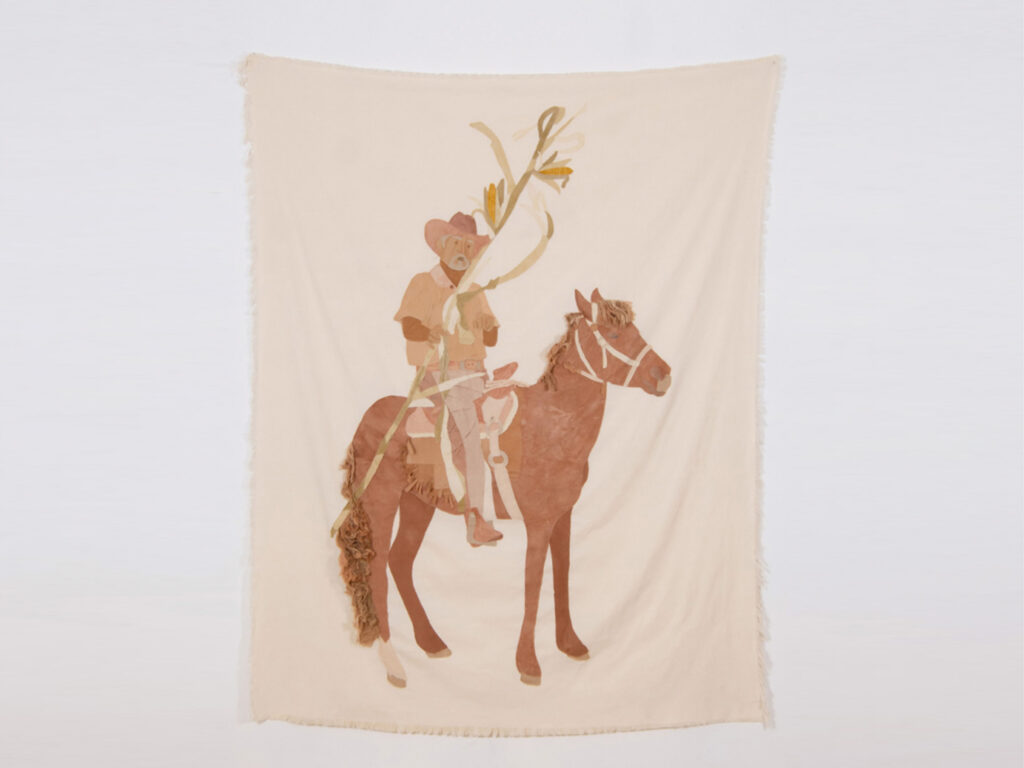
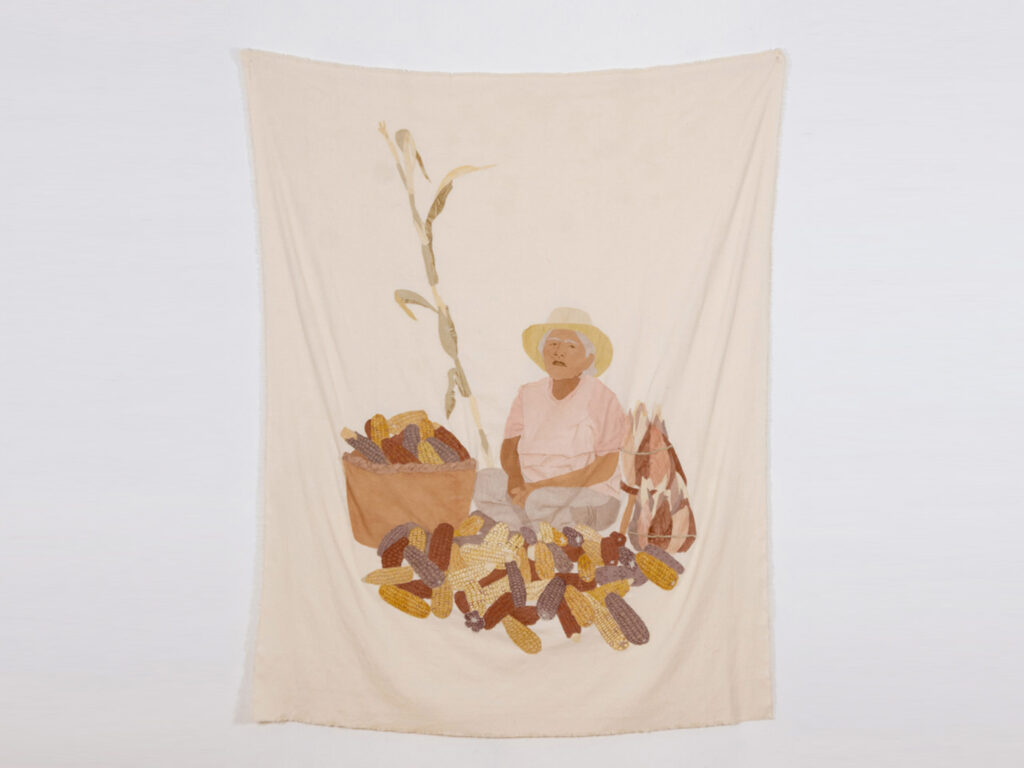
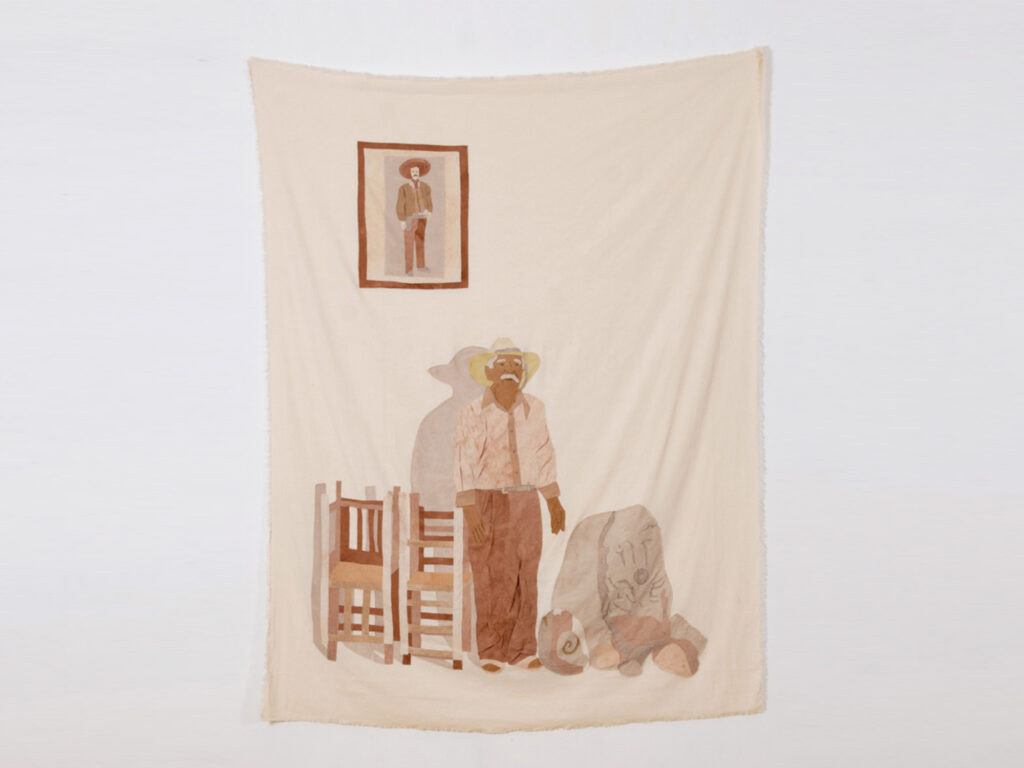
It was against this tragic backdrop that Laposse first began learning about avocados, and thinking about how to integrate them into his work. His initial instinct was to collaborate with people in Cheran, a village in Michoacan that heroically stood up in the face of illegal logging in 2011. (Aerial views tell the story with brutal efficiency: today, Cheran remains lush and green, while to all sides are dusty brown fields, blasted by over-farming and erosion.) But he saw that asking the people there to grow avocados, even in this context, would be inappropriate: “I realized that it was extremely offensive to try and make them work with the fruit, for them it means death and a symbolic return to how things were there before the revolt.” Instead, his source is a guacamole vendor who plies his trade near Laposse’s studio in Mexico City.
Though Laposse initially experimented with avocado marquetry, along the lines of Totomoxtle, he ultimately realized that using it for dye would be a better option. The waste peels and pits could be used to create a gorgeous palette of pinks and peaches and deeper purplish browns, supplemented by yellows made from marigolds raised in Tonahuixtla. Resting Place, a low-slung daybed features a patchwork of these colors; the nuanced tonalities wrap around the object’s rounded, boat-like contours like a hand-drawn map. The avocado colors are also used to great effect in his pictorial works, which are collaged from pieces of dyed cotton. Among them is his most ambitious work to date, a 40-meter-long tapestry telling the story of Cheran, which will debut this December in the National Gallery of Victoria’s 2023 Triennial, along with a documentary film produced with support from the museum, and other works from the Conflict Avocados project, all of which will be retained in the NGV collection. One model in Laposse’s mind for this masterwork was the so-called Bayeux Tapestry (actually an embroidery), which depicts the Norman conquest of England – an analogy that emphasizes the high stakes of this battle over competing visions for the land and its inhabitation.
When I first spoke to Laposse about his interest in avocados, back in February 2021, he spoke frankly of his anger with the situation in Michoacan: the violence being perpetrated there; the heedless damage to the natural world; the results of an insistent “demand for a product on the other side of the world, without taking into account conditions where it has been harvested.” But if anger is all he had put into these works, they would do little to communicate the reality of the situation. Instead, he has offered something much more affecting: a deeply respectful regard, of the sort too often denied to people like Doña Lucy, Don Emiliano and Saul. The works are careful, straightforward acts of looking; importantly, they also show these impressive people looking right back at us, on equal terms. The pictures thus constitute an alternative “medium of exchange,” as it were, one based on mutual respect and recognition, rather than profit. In this respect, they also put a human face on the fundamentally holistic dynamics of his practice: he manages to address complex social issues while still arriving at charismatic objects, which will accumulate further meanings as they travel the world.
It’s an extremely profound thing that Laposse has done here: he simply witnesses these people, and the places they inhabit, as they truly are, in all their strength, all their richness. There’s no getting around the economic forces that impinge on rural Mexico, which are forbidding in their complexity. Their corrosive effects admit of no easy solution; and to fight for an alternative pathway, as happened in Cheran, requires extraordinary courage and commitment. But understanding the necessity of change? That’s easy. Just open your eyes, and see.
This essay was originally published in exhibition catalogue Fernando Laposse: Ghosts of Our Towns, Friedman Benda, New York, NY, September 2023.
